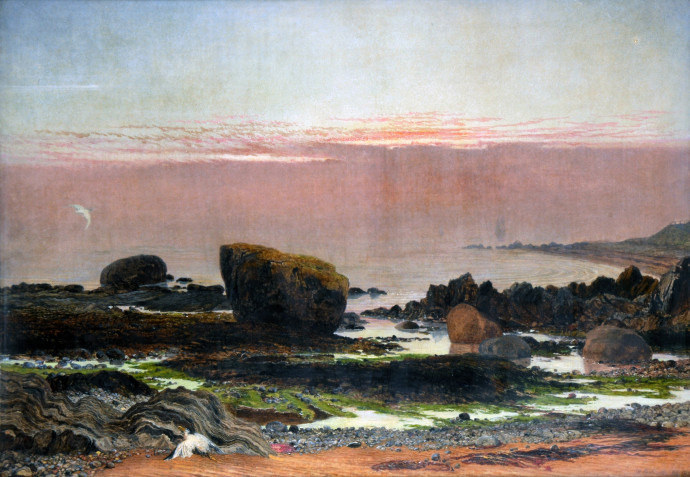This painting shows a rock-strewn beach on the north-east coast of England. The rather melancholy character of the scene is emphasised by the carcass of a dead sea bird in the foreground and the ghostly silhouettes of two sailing ships in the distance. Son of Robert Scott, an Edinburgh engraver, and brother of the historical painter David Scott, William Bell Scott studied under his father and at Trustee’ Academy before moving to London in 1837. In 1843 he was appointed master of the Government School of Design in Newcastle, where his influence did much to popularise the work of the Pre-Raphaelites. The painting is one of several empty seascape scenes by Scott, dating from the 1860s including ‘The Incoming Tide’ (1861) , ‘North Sea by Moonlight’ (1863) and ‘Breakers on a Beach’ (1864). This painting, with its carefully delineated foreground detail of rocks, pebbles and seaweed, illustrates fully the impact of Pre-Raphaelitism on Scott’s work. The art historian Allen Staley however argues that the twilight, the emptiness of the composition and the overall lack of subject matter show the influence of German Romantic artists such as Caspar David Friedrich. Scott was the author of books on Durer and on modern German painting in the 1870s. He was also a poet and his ‘Autobiographical Notes’ provide an interesting record of his friendship with Rosetti, Morris and other artists.

